Ice-age humans stabbed a cave bear through the head 35,000 years ago. Researchers just found the damaged skull.
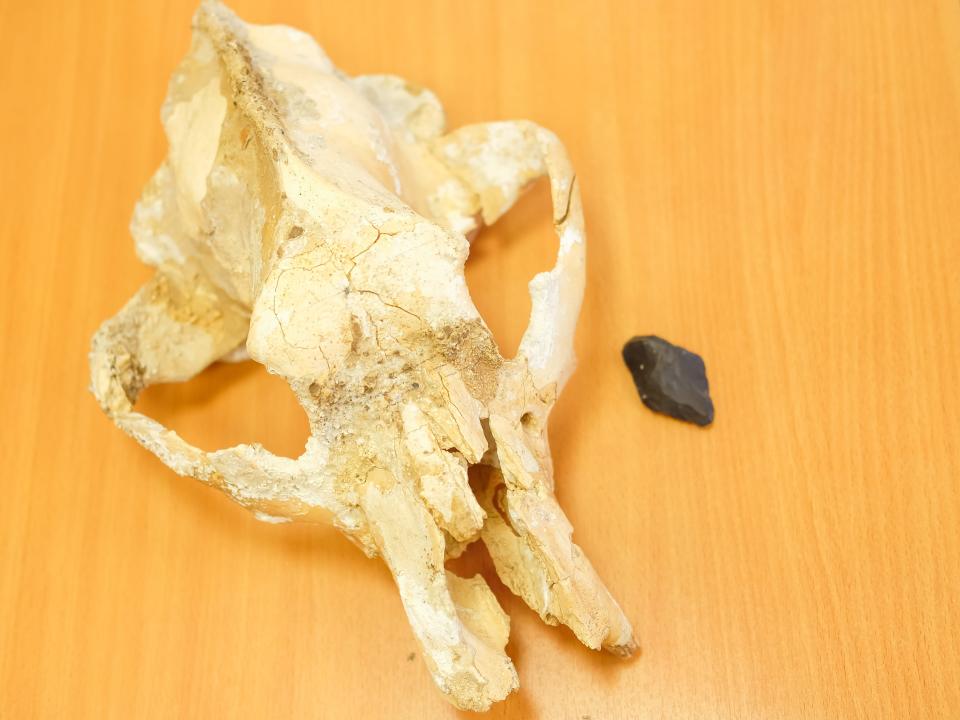
Paleontologists discovered the 35,000-year-old skull of a small cave bear in a Russian cave.
The skull had a distinct, oblong hole in it. A recent study suggests human hunters were to blame - they most likely stabbed the animal in the head while it hibernated.
Although previous research has shown that humans targeted other types of cave bears, this is the first evidence that they hunted small cave bears during the last ice age.
However, it's possible that ice-age humans stabbed the bear after it had already died as part of a ritual.
During the Paleolithic era 35,000 years ago, a small cave bear settled into a cave to hibernate. It never woke up.
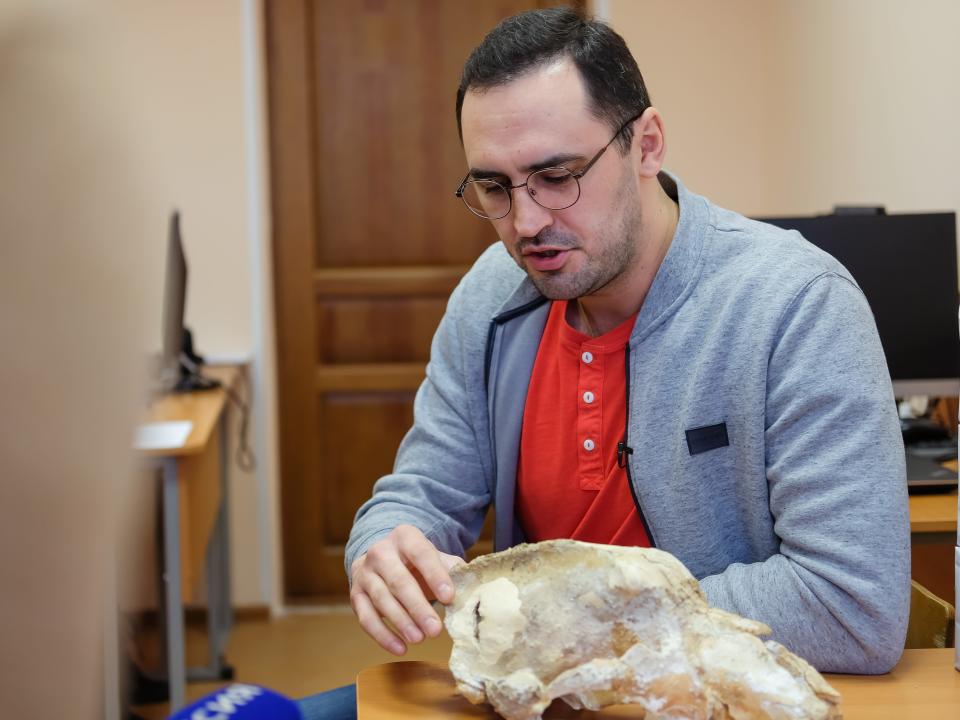
Human hunters most likely found the bear — a species called Ursus rossicus — napping in the cave, according to a recent study. Then they stabbed the beast in the head.
The researchers found the skull during a three-year excavation of the cave, known as Imanay, in a remote part of the southern Ural mountains in Russia. It had a distinct, oblong hole in its side more than an inch long.
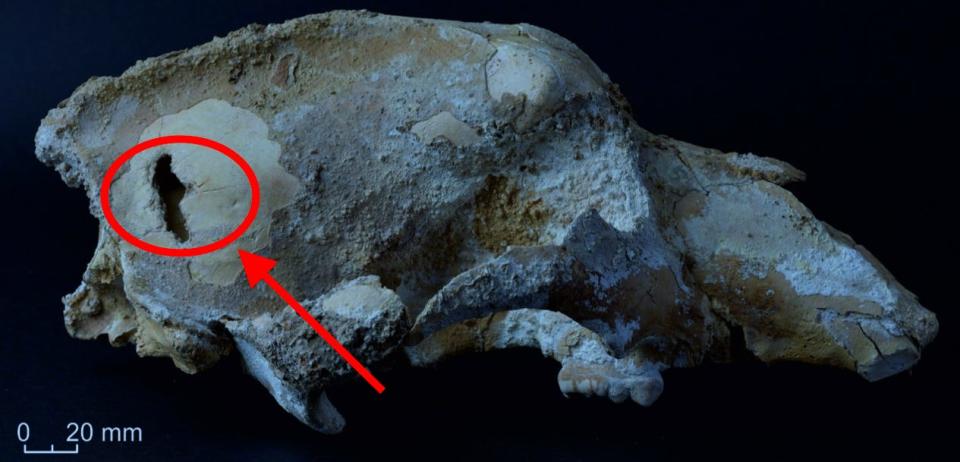
The new study suggests it's evidence of a stabbing wound, which by extension means that Paleolithic people hunted small cave bears.
An analysis of the bear's teeth suggested it died in the winter - which is why paleontologists think it was killed while hibernating.

Bears grow new layers of tooth enamel twice a year, in the summer and winter, Ars Technica reported. So the researchers looked at the layers to determine the bear's age at the time of its death. They concluded the animal was between nine and 10 years old when it died.
The skull hole shows no signs of healing, which suggests the wound happened around the time of the bear's death.
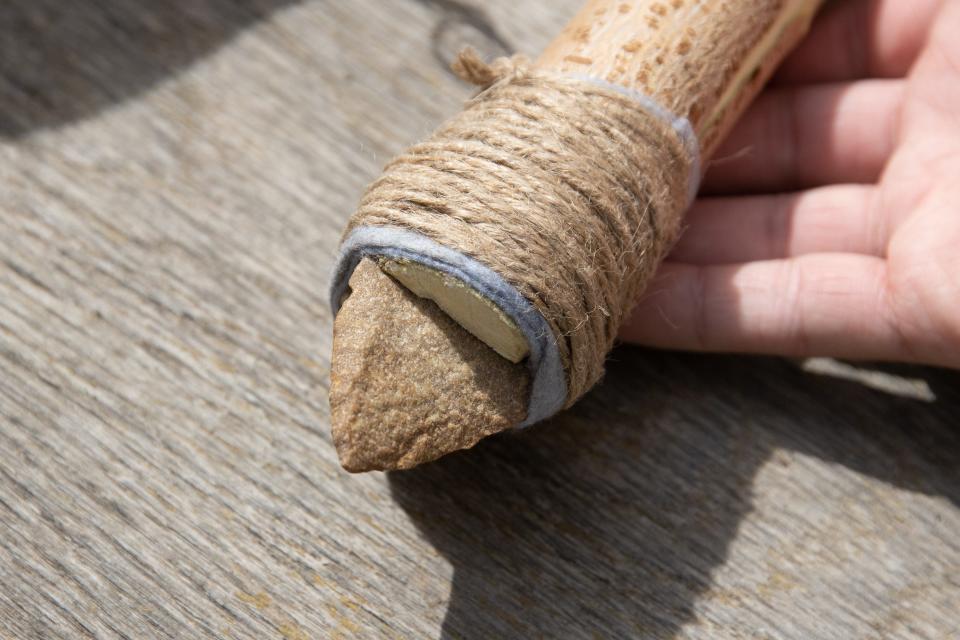
The hole's size suggests a strong impact with a hard object. Although it's possible the bear was bludgeoned by a falling rock while it slept, a hunter is a more likely explanation, according to Dmitry Gimranov, a paleontologist from Ural Federal University.
"Most likely, the animal was killed by ancient people," Gimranov, who co-authored the study, said in a press release.
Gimranov and his colleagues suggest that ancient hunters might have used a spear to pierce the bear's skull. That would be doable if they were standing at close range — a plausible scenario if the animal was deep in slumber.
Gimranov's team didn't find an arrowhead or spear lodged in the cave bear's head, but they did find a piece of flint sharpened to a point in the same layer of cave sediment.
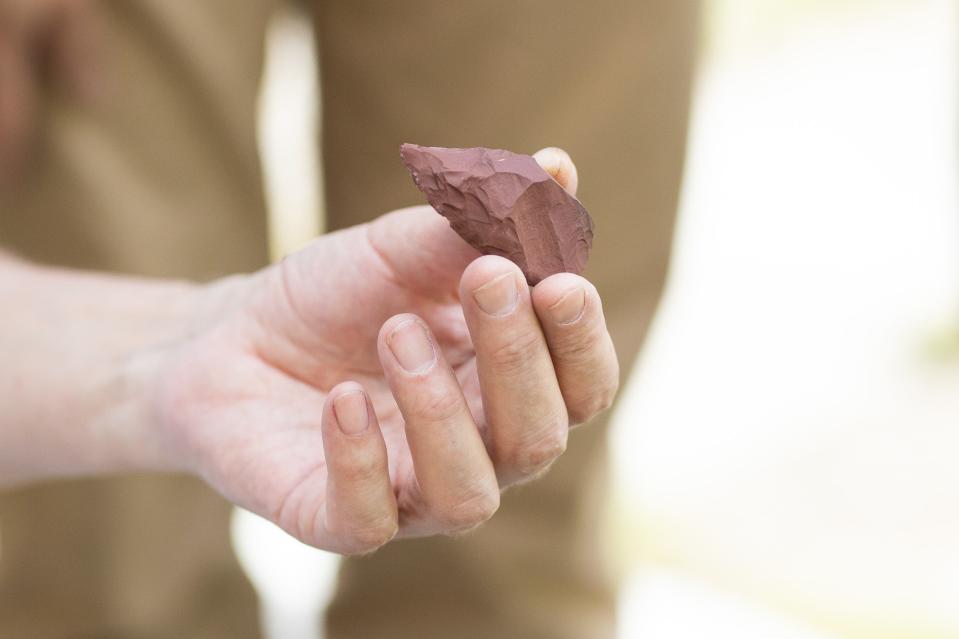
The sharpened point aligned almost perfectly with the hole in the bear skull, according to the study. Gimranov said the point is about the same size as the hole and may have been mounted onto a spear.
Both small and large cave bears - two different species - dwelled in their namesake abodes across Eurasia during the last ice age.
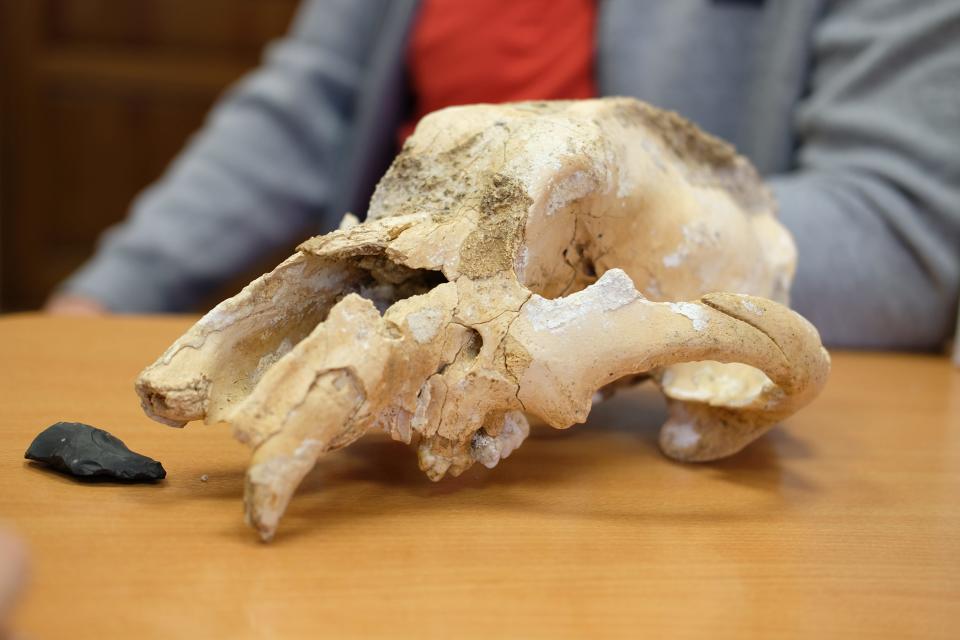
The latter, known as Ursus spelaeus, stood 11.5 feet tall. Both went extinct at least 15,000 years ago.
Our human ancestors occupied and hunted in those same caves, including Imanay.
Previous research has found that ice-age hunters pursued large cave bears, but the new study offers possibly the first direct evidence that humans also hunted small cave bears.
Beyond the skull, Gimranov's team found more than 10,000 bones in Imanay Cave - from foxes, mammoths, cave lions, woolly rhinos, and other small cave bears.
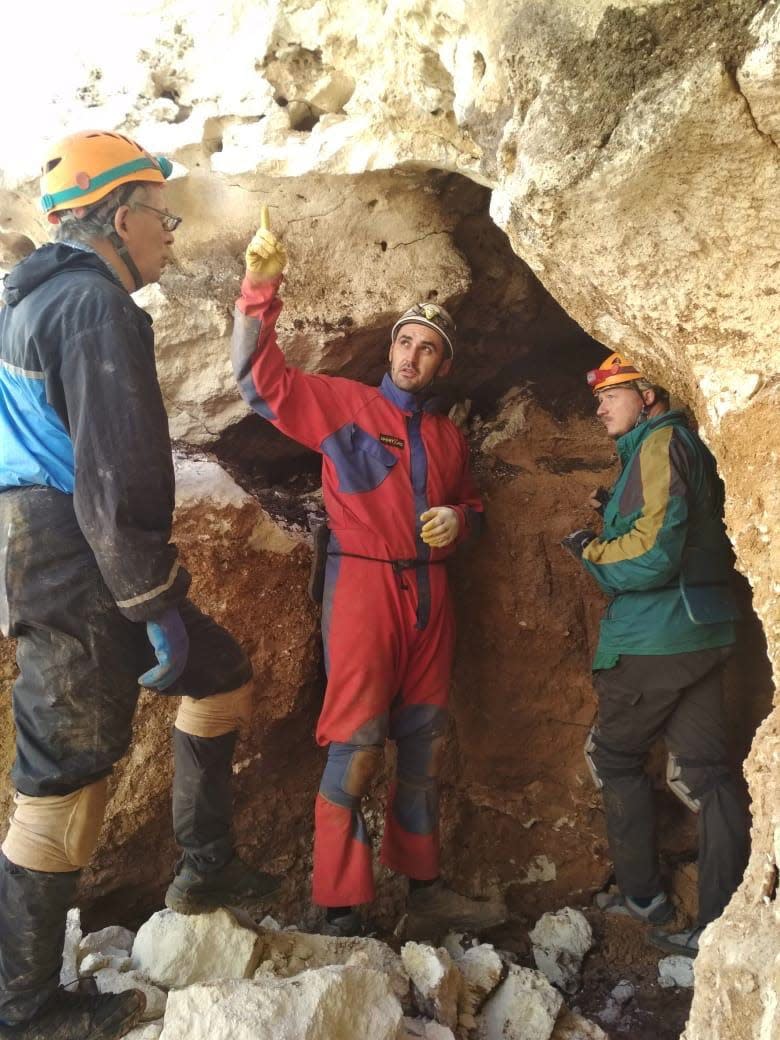
None of the various cave bear bones the researchers found showed signs of being gnawed. That wasn't unexpected, Gimranov said, because only 20 to 30 cave bear bones in the entire Eurasian fossil record show signs of butchering.
So if the hunters at Imanay Cave didn't eat their ursine prey, it's possible they stumbled across the bear after it had died, then stabbed it as part of an ancient ritual.

"In the Paleolithic, ritual, sacred practices were widespread," Gimranov said, adding, "a hole in the skull could have been made after the death of the bear as a ritual practice."
Small cave bears resembled modern-day brown bears in size. They were common across what is now western Europe, and the Ural and Caucus mountains in Russia.
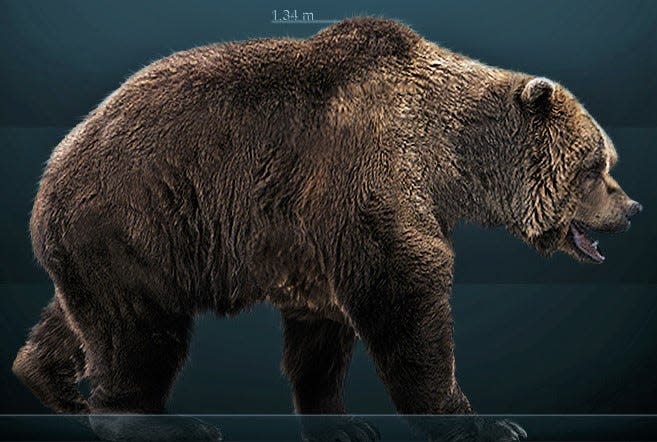
Cave bears' didn't eat meat, however. Their teeth show wear and tear consistent with an animal that dines on tough vegetation.
Read the original article on Business Insider

